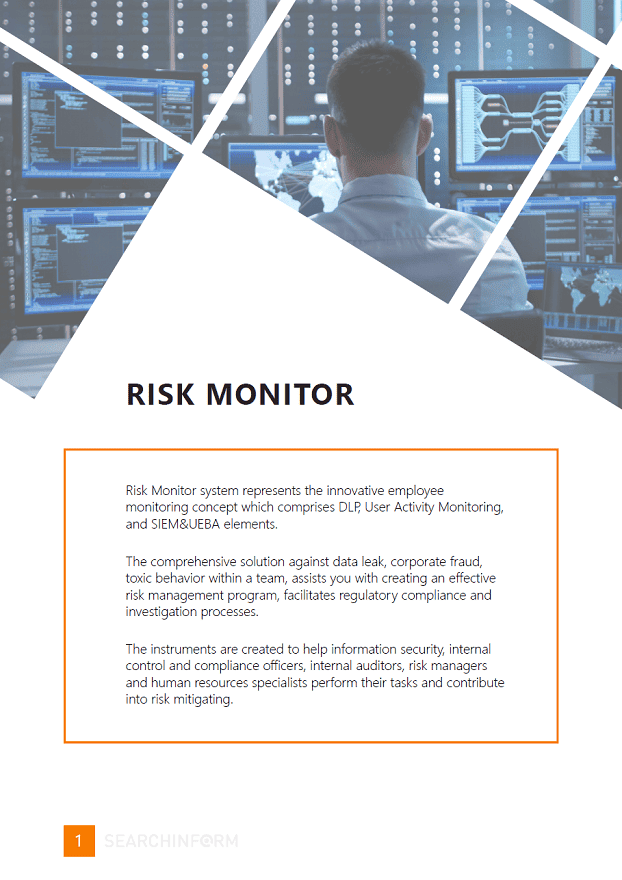Understanding Worms in Cybersecurity
Understanding the World of Worms
When delving into the intricate and often menacing world of cybersecurity, one cannot overlook the significance of worms. These self-replicating programs have been the bane of digital existence for decades, causing havoc in networks and systems worldwide. In this section, we will explore what worms are, trace their historical journey, highlight some of the most notorious examples, and examine their profound impact on our digital infrastructure.
What Exactly Are Worms?
Worms, in the context of cybersecurity, are malicious software programs that replicate themselves to spread across computers and networks. Unlike viruses, which require a host file or a human action to propagate, worms operate autonomously. They exploit vulnerabilities in operating systems or software applications to infiltrate systems, often without any need for user intervention. This autonomous nature makes worms particularly dangerous as they can rapidly propagate, causing widespread damage before detection.
A Journey Through Time: The History and Evolution of Worms
The story of worms begins in the late 20th century, with the advent of interconnected computer networks. One of the earliest and most infamous examples is the Morris Worm, unleashed in 1988 by Robert Tappan Morris, a graduate student at Cornell University. This worm, intended as a harmless experiment, quickly spiraled out of control, infecting approximately 10% of the internet (which was still in its infancy) and causing widespread disruption.
As technology advanced, so did the sophistication of worms. The early 2000s saw the emergence of worms like Code Red and Nimda, which exploited vulnerabilities in Microsoft IIS web servers and email systems, respectively. These worms highlighted the pressing need for robust cybersecurity measures, as they could cripple networks and systems within hours of their release.
Infamous Worms That Shook the Digital World
Several worms have etched their names into the annals of cybersecurity history. Among them, the ILOVEYOU worm stands out. Disguised as a love letter, this worm spread through email attachments in 2000, causing an estimated $10 billion in damages worldwide. Another notable example is the SQL Slammer worm, which in 2003, took advantage of a buffer overflow vulnerability in Microsoft SQL Server, infecting 75,000 hosts within 10 minutes and causing widespread network outages.
More recently, the WannaCry ransomware worm in 2017 exploited a vulnerability in Windows systems, encrypting users' data and demanding ransom payments in Bitcoin. This attack affected over 200,000 computers across 150 countries, including critical infrastructure such as hospitals and transportation systems.
Another significant example is the Conficker worm, which emerged in 2008. Conficker exploited vulnerabilities in Windows operating systems and created a botnet of infected machines. This worm was particularly notorious for its ability to disable security services and block access to security websites, making its removal extremely challenging.
The Stuxnet worm, discovered in 2010, marked a new era of cyber warfare. This worm specifically targeted industrial control systems and was believed to have been created by nation-states to disrupt Iran's nuclear program. Stuxnet's sophisticated design and targeted approach demonstrated how worms could be used for geopolitical purposes.
The Far-Reaching Impact of Worms
The impact of worms on the digital landscape cannot be overstated. They can cause direct financial losses by disrupting business operations, stealing sensitive information, and demanding ransoms. The indirect costs, including system downtime, loss of productivity, and damage to reputation, can be even more significant.
Moreover, worms often serve as a wake-up call for organizations and individuals, highlighting the importance of cybersecurity hygiene. They underscore the need for timely software updates, robust network defenses, and user education to mitigate the risks of such attacks.
The psychological impact on users and organizations can also be profound. The sheer speed and unpredictability of worm attacks create an environment of constant vigilance and stress, as cybersecurity professionals strive to stay one step ahead of these evolving threats.
Vigilance in an Ever-Evolving Threat Landscape
As we continue to navigate the complexities of the digital world, understanding the nature and history of worms is crucial. These malicious programs have evolved alongside technology, growing more sophisticated and destructive. By studying their behaviors and impacts, we can better prepare ourselves to defend against future threats, ensuring the resilience and security of our interconnected systems.
In conclusion, the world of worms in cybersecurity is a testament to the ever-evolving nature of digital threats. From the early days of the Morris Worm to the sophisticated Stuxnet, these malicious programs have continually adapted to exploit new vulnerabilities. As we move forward, a proactive and informed approach to cybersecurity will be essential in safeguarding our digital future.
Diving Deep into the Types of Worms in Cybersecurity
When it comes to cybersecurity, understanding the various types of worms that can infiltrate and wreak havoc on networks and systems is crucial. Worms are not a monolithic entity; they come in different forms, each with unique characteristics and methods of propagation. In this section, we'll explore the different types of worms, highlighting their distinct features and the specific threats they pose.
The Classic Worm: Self-Replicating Menace
The most basic type of worm is the classic self-replicating worm. These worms spread by exploiting vulnerabilities in software or operating systems, replicating themselves onto other systems through networks. Once a classic worm infiltrates a system, it can propagate rapidly, often without any user intervention. The Morris Worm, one of the first and most famous examples, falls into this category. Despite their relatively straightforward mechanism, classic worms can cause significant damage by overwhelming network resources and disrupting operations.
Email Worms: Sneaky Attachments
Email worms are a cunning breed, using email as their primary vehicle for spreading. These worms often arrive as malicious attachments or links in seemingly innocuous emails. Once a user opens the attachment or clicks the link, the worm is activated and begins to spread to the user's contacts. The ILOVEYOU worm, which caused massive global disruption in 2000, is a prime example of an email worm. This type of worm preys on human curiosity and trust, making user education and awareness critical defenses.
Instant Messaging Worms: Real-Time Threats
In an era where instant messaging (IM) platforms are ubiquitous, IM worms pose a significant threat. These worms spread through instant messaging applications like WhatsApp, Facebook Messenger, and Skype by sending malicious links or files to a user's contacts. Once a recipient clicks on the link or opens the file, the worm infects their device and continues the cycle. The Kelvir worm, which targeted MSN Messenger in the mid-2000s, exemplifies the dangers of IM worms. With the increasing reliance on IM for both personal and professional communication, these worms present a growing cybersecurity challenge.
Internet Worms: Exploiting the Web
Internet worms, also known as network worms, are designed to spread through the internet. They scan the web for vulnerable systems and exploit security weaknesses to infect them. These worms can propagate rapidly, often causing widespread network congestion and service disruptions. The SQL Slammer worm, which brought down thousands of servers within minutes in 2003, is a notorious example of an internet worm. Given the interconnected nature of modern digital infrastructure, internet worms can have far-reaching and devastating effects.
File-Sharing Worms: Peer-to-Peer Perils
File-sharing worms target peer-to-peer (P2P) networks, spreading through shared files and applications. These worms often disguise themselves as popular files, such as music, movies, or software, to entice users into downloading them. Once downloaded, the worm infects the user's system and spreads to other connected devices. The Win32/Parite worm is an example of a file-sharing worm that propagated through P2P networks in the early 2000s. With the continued popularity of P2P file-sharing, these worms remain a persistent threat.
Mobile Worms: A New Frontier
As mobile devices become increasingly integral to daily life, mobile worms have emerged as a new cybersecurity frontier. These worms target smartphones and tablets, spreading through mobile operating systems and applications. Mobile worms can propagate via text messages, malicious apps, or even Bluetooth connections. The Cabir worm, which targeted Symbian OS devices via Bluetooth in 2004, was one of the first mobile worms. With the proliferation of mobile devices and apps, the potential for mobile worm outbreaks is a growing concern.
Botnet Worms: The Silent Controllers
Botnet worms are particularly insidious, as they not only spread across networks but also recruit infected devices into a botnet—a network of compromised computers controlled by an attacker. These botnets can be used for a variety of malicious activities, including distributed denial-of-service (DDoS) attacks, spamming, and data theft. The Conficker worm, which created one of the largest botnets ever seen, is a prime example of a botnet worm. The ability of these worms to silently amass large numbers of infected devices makes them a formidable threat.
Multi-Vector Worms: The Versatile Attackers
Multi-vector worms are among the most versatile and dangerous types of worms. They employ multiple methods to spread, making them harder to detect and contain. These worms can propagate through email, instant messaging, file-sharing networks, and even exploit web vulnerabilities simultaneously. By using various attack vectors, multi-vector worms increase their chances of finding a vulnerable entry point into a system or network. An example of such a worm is the Mydoom worm, which used both email and P2P networks to spread rapidly in 2004. The adaptability and reach of multi-vector worms make them a significant concern for cybersecurity professionals.
Social Media Worms: Exploiting the Social Web
With the rise of social media platforms, a new breed of worms has emerged, exploiting the interconnected nature of these networks. Social media worms spread through platforms like Facebook, Twitter, and Instagram by leveraging social engineering tactics. They often appear as enticing posts, messages, or links that lure users into clicking on them. Once clicked, the worm spreads to the user’s contacts, perpetuating the cycle. The Koobface worm, which targeted Facebook users in 2008, is a notable example. Social media worms exploit the trust and curiosity of users, making it essential to maintain good digital hygiene and skepticism when interacting online.
Bluetooth Worms: The Proximity Predators
Bluetooth worms capitalize on the short-range wireless communication technology to spread between devices. These worms seek out other Bluetooth-enabled devices within proximity and attempt to infect them. Once a device is compromised, the worm continues to search for new targets, creating a ripple effect. The Cabir worm, the first known mobile worm, spread via Bluetooth to Symbian OS devices. With the ubiquity of Bluetooth-enabled devices, including smartphones, tablets, and even smartwatches, Bluetooth worms pose a unique and often underestimated threat.
Ethical Worms: The Unlikely Guardians
Not all worms are created with malicious intent. Ethical worms, also known as benevolent or good worms, are designed to improve security rather than compromise it. These worms spread through networks, identifying and patching vulnerabilities, or removing malicious software from infected devices. The Welchia worm, which emerged in 2003, sought to remove the Blaster worm from infected systems and then patch the vulnerability that Blaster exploited. While the idea of ethical worms is intriguing, their deployment raises ethical and legal questions, as they still operate without user consent and can potentially cause unintended disruptions.
Zero-Day Worms: Exploiting the Unknown
Zero-day worms are particularly dangerous because they exploit zero-day vulnerabilities—security flaws that are unknown to the software vendor and for which no patch exists. These worms can cause significant damage before the vulnerability is discovered and patched. The Stuxnet worm, for instance, utilized multiple zero-day exploits to target Iran's nuclear facilities. The ability of zero-day worms to take advantage of unknown weaknesses makes them a potent threat, emphasizing the need for proactive security measures and rapid response capabilities.
IoT Worms: The Internet of Threats
As the Internet of Things (IoT) continues to expand, IoT worms have emerged as a new category of threat. These worms target connected devices such as smart home appliances, industrial sensors, and wearable technology. IoT worms exploit vulnerabilities in the often-overlooked security of these devices, spreading across the IoT ecosystem. The Mirai worm, which in 2016 created a massive botnet from infected IoT devices, is a prime example. The attack resulted in widespread internet outages by launching a massive DDoS attack. As IoT devices become more prevalent, the potential impact of IoT worms will only grow, necessitating robust security measures for these devices.
Hybrid Worms: Combining Forces
Hybrid worms are a sophisticated type of malware that combines the characteristics of worms with other forms of malicious software such as viruses, trojans, or ransomware. These worms not only spread autonomously but also carry additional payloads that can execute various malicious activities. For example, a hybrid worm might replicate itself while simultaneously deploying ransomware to encrypt a victim's files. The WannaCry attack, which combined worm propagation with ransomware encryption, is an example of a hybrid worm. The multi-functional nature of hybrid worms makes them exceptionally dangerous, as they can inflict multiple types of damage in a single attack.
Navigating the Complex World of Worms
Understanding the different types of worms is essential for developing effective cybersecurity strategies. Each type of worm presents unique challenges and requires specialized defenses. From classic self-replicating worms to sophisticated hybrid worms, the threat landscape is diverse and ever-evolving. Staying informed about these threats and adopting a proactive approach to cybersecurity can help mitigate the risks posed by these relentless digital adversaries.
In summary, the world of worms is complex and multifaceted. By recognizing the specific characteristics and propagation methods of each type, we can better prepare ourselves to defend against these digital intruders. As technology continues to advance, so too will the strategies and tools we employ to protect our digital infrastructure from the diverse and evolving threat of worms.
The Inner Workings of Worms in Cybersecurity
Understanding how worms operate is crucial for anyone involved in cybersecurity. These malicious programs are not just simple nuisances; they are sophisticated pieces of software designed to exploit vulnerabilities, spread rapidly, and cause significant damage. In this section, we'll delve into the mechanics of how worms work, from their initial infection methods to their propagation strategies and payload execution.
Initial Infection: The Point of Entry
The journey of a worm begins with its initial infection of a host system. This can occur in several ways:
- Exploiting Vulnerabilities: Worms often take advantage of unpatched vulnerabilities in operating systems or applications. For instance, the notorious WannaCry worm exploited a vulnerability in the Windows SMB protocol to gain access to systems. These vulnerabilities are often discovered and disclosed by security researchers, but if patches are not applied in time, worms can exploit these weaknesses to infiltrate systems.
- Social Engineering: Some worms rely on social engineering tactics, such as phishing emails or deceptive links, to trick users into executing malicious code. The ILOVEYOU worm is a classic example, spreading through email attachments disguised as love letters. Social engineering exploits human psychology, leveraging curiosity, fear, or trust to manipulate users into unwittingly activating the worm.
- Direct Network Infiltration: Worms can also infiltrate networks directly by scanning for open ports and weak security configurations. The SQL Slammer worm spread by sending a single packet to vulnerable SQL servers, causing widespread disruption. This method is particularly effective in environments where network security is lax or misconfigured.
Propagation: The Spread of Infection
Once a worm successfully infects a host, its primary objective is to spread to as many other systems as possible. The methods of propagation can vary:
- Network Scanning: Many worms scan local and remote networks for other vulnerable systems. They use techniques like IP address scanning and port scanning to identify potential targets. The Conficker worm, for instance, scanned networks for machines with weak passwords or unpatched vulnerabilities. Network scanning can be incredibly efficient, allowing worms to spread rapidly across interconnected systems.
- Email and Messaging: Worms like Mydoom and Kelvir spread by sending copies of themselves via email or instant messaging platforms. They often masquerade as legitimate files or links to entice users into opening them. This method leverages the widespread use of email and messaging applications, making it a highly effective propagation strategy.
- File Sharing: Some worms propagate through P2P file-sharing networks, embedding themselves in popular files. Users unknowingly download and execute the infected files, further spreading the worm. The Win32/Parite worm is an example of a file-sharing worm that propagated through P2P networks in the early 2000s. As P2P file-sharing remains popular, this method continues to be a viable propagation strategy for worms.
- Removable Media: Worms can also spread through USB drives and other removable media. When an infected drive is plugged into a new system, the worm copies itself onto the new host and continues its propagation. This method exploits the physical transfer of data, making it effective in environments where network security is robust but physical security is lax.

Payload Execution: The Malicious Intent
While the primary goal of a worm is to reproduce and spread, many worms also carry a payload—a piece of code designed to execute specific malicious activities. These can include:
- Data Theft: Some worms are designed to steal sensitive information, such as passwords, credit card numbers, or personal data. The Bugbear worm, for example, captured keystrokes to harvest sensitive information. Data theft worms can have severe implications for both individuals and organizations, leading to identity theft, financial loss, and reputational damage.
- Ransomware: Worms like WannaCry combine the characteristics of a worm with ransomware, encrypting a victim's data and demanding a ransom for decryption. Ransomware worms can cripple organizations by locking them out of critical data and systems, forcing them to either pay the ransom or face prolonged downtime.
- Botnet Creation: Worms like Conficker turn infected systems into bots, which can be controlled remotely to launch DDoS attacks, send spam, or mine cryptocurrency. Botnets created by worms can be used for various malicious activities, amplifying the damage caused by the initial infection.
- Destruction: Some worms are purely destructive, designed to corrupt or delete files on the infected systems. The Mydoom worm, for example, included a payload that launched DDoS attacks against specific websites. Destructive worms can cause significant data loss and disrupt business operations, leading to financial and operational setbacks.
Stealth and Persistence: Evading Detection
Modern worms often employ various techniques to evade detection and maintain persistence on infected systems:
- Polymorphism: Some worms can change their code slightly each time they replicate, making it difficult for signature-based antivirus software to detect them. Polymorphic worms can evade traditional detection methods by altering their appearance, making them harder to identify and remove.
- Rootkits: Worms may use rootkits to hide their presence on a system, making it difficult for users and security tools to detect and remove them. Rootkits enable worms to operate stealthily, avoiding detection by hiding their files, processes, and network activities from the operating system and security software.
- Disabling Security Features: Worms like Conficker can disable antivirus software and block access to security websites, making it harder for users to update their defenses. By disabling security features, worms can prolong their presence on infected systems and continue their malicious activities undetected.
- Scheduled Tasks: Some worms create scheduled tasks or registry entries to ensure they are executed every time the system reboots, maintaining their presence and activity. This persistence mechanism ensures that the worm remains active and continues its propagation even after system reboots.
Real-World Example: The Lifecycle of the Code Red Worm
To illustrate how worms work, let's examine the lifecycle of the Code Red worm, which emerged in 2001:
- Initial Infection: Code Red exploited a buffer overflow vulnerability in Microsoft's IIS web server to gain access to systems. This initial infection method allowed the worm to target specific systems with known vulnerabilities.
- Propagation: Once infected, Code Red scanned the internet for other vulnerable IIS servers and spread to them. It used a simple yet effective propagation strategy, rapidly infecting thousands of servers. The worm's rapid propagation overwhelmed network resources and caused widespread disruptions.
- Payload Execution: The worm carried a payload that defaced infected websites with the message "Hacked by Chinese!" Additionally, it initiated a DDoS attack against the White House website, attempting to overwhelm it with traffic. The payload's dual purpose of vandalism and disruption highlighted the worm's malicious intent.
- Evasion and Persistence: While Code Red did not employ advanced evasion techniques, its rapid propagation and destructive payload caused significant disruption, highlighting the importance of timely vulnerability patching and robust network defenses. The worm's impact underscored the need for proactive security measures and vigilance in maintaining system integrity.
The Anatomy of a Digital Predator
Understanding how worms work is essential for developing effective cybersecurity measures. From their initial infection methods to their propagation strategies and payload execution, worms are complex and adaptive threats. By studying their behavior and mechanisms, we can better anticipate their actions and implement defenses to protect our digital infrastructure.
In summary, worms are sophisticated digital predators that exploit vulnerabilities, spread rapidly, and execute malicious payloads. Staying informed about their inner workings and adopting proactive security measures can help mitigate the risks posed by these relentless threats. By recognizing the various techniques and strategies employed by worms, we can enhance our defenses and safeguard our systems against these ever-evolving digital adversaries.
Safeguarding Against Worms: Prevention and Mitigation Strategies
Worms represent a persistent and evolving threat in the cybersecurity landscape. Their ability to self-replicate and spread autonomously makes them particularly dangerous. However, understanding and implementing effective prevention and mitigation strategies can significantly reduce the risk of worm infections. In this section, we will explore various tactics to protect against these malicious programs, from proactive measures to reactive responses.
Proactive Prevention: Building a Strong Defense
Regular Software Updates and Patch Management:
One of the most effective ways to prevent worm infections is to ensure that all software and operating systems are up to date. Vendors frequently release patches for known vulnerabilities, and timely application of these updates can close the security gaps that worms exploit. Automated update systems and patch management solutions can help organizations stay current with the latest security patches.
Robust Network Security:
Implementing robust network security measures is crucial in defending against worms. This includes:
- Firewalls: Configuring firewalls to block unauthorized access and monitor incoming and outgoing traffic can help prevent worms from infiltrating and spreading through networks.
- Intrusion Detection and Prevention Systems (IDPS): Deploying IDPS can help detect and block suspicious activities indicative of worm propagation.
- Network Segmentation: Dividing a network into smaller, isolated segments can limit the spread of worms, containing infections to a smaller area and preventing them from reaching critical systems.
Endpoint Protection:
Comprehensive endpoint protection solutions, including antivirus and anti-malware software, are essential in defending individual devices against worm infections. These solutions should be kept up to date with the latest threat definitions and configured to perform regular scans and real-time monitoring.
User Education and Awareness:
Human error is a significant factor in the spread of worms, particularly those that rely on social engineering tactics. Educating users about the dangers of phishing emails, suspicious links, and unknown attachments can reduce the likelihood of accidental worm activation. Regular training sessions and simulated phishing exercises can help reinforce good cybersecurity practices.
Safe Configuration Practices:
Ensuring that systems and applications are securely configured can reduce the risk of worm infections. This includes disabling unnecessary services, closing open ports, and enforcing strong authentication mechanisms. Configuring security policies to enforce the principle of least privilege—granting users and applications the minimum level of access necessary—can also limit the potential impact of a worm infection.
Reactive Mitigation: Responding to Worm Infections
Incident Response Planning:
Having a well-defined incident response plan is crucial for effectively managing and mitigating worm infections. This plan should outline the steps to be taken in the event of an infection, including:
- Detection and Analysis: Identifying the presence of a worm and understanding its behavior and propagation methods.
- Containment: Isolating infected systems and network segments to prevent further spread.
- Eradication: Removing the worm from infected systems and applying patches or updates to close the exploited vulnerabilities.
- Recovery: Restoring affected systems and data from backups and verifying that the worm has been completely eradicated.
- Post-Incident Review: Analyzing the incident to identify lessons learned and improve future prevention and response efforts.
Its discovery entails:
Network Isolation and Segmentation:
In the event of a worm infection, quickly isolating affected network segments can prevent the worm from spreading to other parts of the network. This may involve disabling network connections, blocking specific IP addresses, or quarantining infected devices.
Forensic Analysis:
Conducting a forensic analysis of the worm infection can provide valuable insights into its origin, propagation methods, and impact. This information can help in developing targeted mitigation strategies and preventing future infections. Forensic analysis may involve examining log files, analyzing network traffic, and reverse-engineering the worm's code.
System Hardening:
Hardening systems by disabling unnecessary services, applying security patches, and configuring security settings can reduce the attack surface and make it more difficult for worms to propagate. Regular vulnerability assessments and penetration testing can help identify and address potential weaknesses in the system.
Backup and Recovery:
Maintaining regular backups of critical data and systems is essential for recovering from a worm infection. Backups should be stored in a secure, isolated location to prevent them from being compromised by the worm. In the event of an infection, restoring systems from clean backups can help minimize downtime and data loss.
Advanced Strategies: Leveraging Technology and Collaboration
Machine Learning and AI:
Leveraging machine learning and artificial intelligence (AI) can enhance the detection and mitigation of worms. Advanced algorithms can analyze patterns and behaviors indicative of worm activity, enabling faster and more accurate identification of threats. AI-powered security solutions can also adapt to evolving threats, improving their effectiveness over time.
Threat Intelligence Sharing:
Collaboration and information sharing among organizations, industry groups, and government agencies can enhance the collective defense against worms. Participating in threat intelligence sharing initiatives allows organizations to stay informed about the latest threats, vulnerabilities, and mitigation strategies. This collaborative approach can lead to faster identification and response to emerging worm threats.
Behavioral Analysis:
Monitoring and analyzing the behavior of network traffic, applications, and users can help detect anomalies indicative of worm activity. Behavioral analysis solutions can identify unusual patterns, such as unexpected network scans or rapid file modifications, enabling early detection and proactive mitigation of worm infections.
Zero Trust Architecture:
Implementing a Zero Trust security model can reduce the risk of worm infections by enforcing strict access controls and continuously verifying the identity and behavior of users and devices. Zero Trust principles include:
- Least Privilege: Granting users and applications the minimum level of access necessary.
- Micro-Segmentation: Dividing the network into smaller, isolated segments with strict access controls.
- Continuous Monitoring: Continuously monitoring and analyzing network traffic and user behavior for signs of suspicious activity.
A Comprehensive Approach to Worm Defense
Preventing and mitigating worm infections requires a comprehensive approach that combines proactive prevention, reactive mitigation, advanced technologies, and collaboration. By implementing robust security measures, educating users, and staying informed about the latest threats, organizations can significantly reduce the risk of worm infections and minimize their impact.
Worms are a formidable threat in the cybersecurity landscape, but with the right strategies and tools, their impact can be effectively managed. By adopting a proactive and layered defense approach, organizations can safeguard their digital infrastructure and maintain resilience in the face of evolving worm threats.
The Future of Worms: Evolving Threats in Cybersecurity
As technology continues to advance at a rapid pace, so too do the threats that lurk in the shadows of the digital world. Worms, in particular, are evolving in both sophistication and impact, posing new challenges for cybersecurity professionals. In this section, we will explore the future of worms, examining emerging trends, potential advancements, and the evolving landscape of cybersecurity threats.
AI and Machine Learning: Smarter Worms on the Horizon
Artificial intelligence (AI) and machine learning (ML) are transforming various industries, and unfortunately, cybercriminals are not exempt from leveraging these technologies. Future worms could potentially incorporate AI and ML to enhance their capabilities:
- Adaptive Behavior: AI-driven worms could analyze their environment in real-time, adapting their behavior to evade detection and maximize their spread. For instance, they could identify and exploit the most vulnerable systems or dynamically alter their propagation methods based on network configurations.
- Automated Exploit Generation: Machine learning algorithms could be used to automatically discover and exploit new vulnerabilities. Such worms would not need pre-existing knowledge of specific weaknesses; instead, they could learn and adapt on-the-fly, making them far more dangerous.
- Decision-Making Capabilities: AI could enable worms to make complex decisions, such as prioritizing targets based on their value or potential impact. This could lead to more targeted and efficient attacks, increasing the overall damage inflicted by the worm.
IoT and Smart Devices: Expanding Attack Surfaces
The proliferation of Internet of Things (IoT) devices and smart technology presents a growing attack surface for worms. As more everyday objects become connected to the internet, the potential for worm infections increases:
- IoT-Specific Worms: Future worms could be designed specifically to target IoT devices, exploiting the often-lax security measures of these devices. This could lead to widespread disruptions, particularly in smart homes, healthcare, and industrial settings.
- Cross-Platform Infections: Worms could evolve to infect multiple types of devices and operating systems, seamlessly spreading between traditional computers, mobile devices, and IoT gadgets. This cross-platform capability would make containment and eradication far more challenging.
- Critical Infrastructure Threats: As IoT devices become more integrated into critical infrastructure, such as power grids and transportation systems, the potential impact of worm infections grows. Future worms could be used in cyber warfare to disrupt essential services, causing significant societal and economic damage.
Ransomware and Financial Motivations: Increasingly Profitable Worms
The rise of ransomware has demonstrated the financial potential of malware, and future worms are likely to incorporate similar tactics to maximize profit:
- Ransomware-Worm Hybrids: Combining the self-replicating nature of worms with the extortion capabilities of ransomware creates a potent threat. Future worms could encrypt data or lock systems, demanding ransom payments to restore access. The WannaCry attack is a prime example of this hybrid approach, and such attacks are likely to become more sophisticated.
- Cryptojacking Worms: With the growing popularity of cryptocurrencies, worms could be designed to hijack the processing power of infected devices to mine cryptocurrency. These cryptojacking worms could spread rapidly, creating large botnets to generate substantial profits for cybercriminals.
- Financial Data Theft: Future worms could focus on stealing financial information, such as credit card numbers and banking credentials, to facilitate fraud and identity theft. The financial incentives for such activities make them an attractive target for cybercriminals, driving the evolution of more advanced and stealthy worms.
Nation-State Actors: Worms as Tools of Cyber Warfare
Nation-state actors are increasingly using cyber tools to achieve geopolitical objectives, and worms are likely to play a significant role in future cyber warfare:
- Targeted Attacks: Nation-state actors could develop highly sophisticated worms to target specific organizations, industries, or infrastructure. These targeted attacks could be used to gather intelligence, disrupt operations, or sabotage critical systems.
- Cyber Espionage: Future worms could be designed to infiltrate and exfiltrate sensitive information from government agencies, military installations, and private enterprises. These espionage worms could operate stealthily, remaining undetected for extended periods while collecting valuable data.
- Disinformation Campaigns: Worms could be used to spread disinformation or manipulate data, influencing public opinion or undermining trust in institutions. Such tactics could be part of broader information warfare strategies aimed at destabilizing adversaries.
Advanced Evasion Techniques: Eluding Detection and Response
As cybersecurity defenses improve, future worms are likely to incorporate advanced evasion techniques to avoid detection and response:
- Polymorphism and Metamorphism: Future worms could use polymorphic and metamorphic techniques to constantly change their code and behavior, making them harder to detect with traditional signature-based methods. These techniques involve altering the worm's appearance or functionality with each replication, evading pattern recognition.
- Stealth and Persistence: Worms could employ advanced rootkits and stealth techniques to hide their presence on infected systems. They could also use persistence mechanisms, such as scheduled tasks or novel methods to survive system reboots and security scans.
- Distributed Command and Control: Future worms could use decentralized command and control (C2) structures, such as peer-to-peer networks or blockchain technology, to coordinate their activities and receive instructions. This would make it more difficult for cybersecurity teams to disrupt the worm's operations by targeting a central C2 server.
Collaborative Defense: The Need for Collective Action
As worms become more sophisticated, the need for collaborative defense efforts becomes increasingly important:
- Threat Intelligence Sharing: Organizations, industry groups, and government agencies must collaborate and share threat intelligence to stay ahead of emerging worm threats. Real-time information sharing can help identify and mitigate new infections more quickly.
- Public-Private Partnerships: Public-private partnerships can enhance the collective defense against worms by pooling resources, expertise, and information. Governments can work with private sector organizations to develop and implement effective cybersecurity strategies.
- Global Cooperation: Worms are a global threat, and international cooperation is essential for combating them. Countries must work together to establish norms, share intelligence, and coordinate responses to cross-border cyber threats.
Preparing for the Future of Worms
The future of worms in cybersecurity is marked by increasing sophistication, adaptability, and impact. As these digital predators evolve, so too must our defenses. By staying informed about emerging trends, leveraging advanced technologies, and fostering collaboration, we can build a more resilient cybersecurity landscape.
The future of worms presents both challenges and opportunities. As cybercriminals and nation-state actors continue to innovate, the need for proactive and adaptive cybersecurity measures becomes more critical than ever. By understanding the evolving threat landscape and implementing comprehensive defense strategies, we can protect our digital world from the ever-present danger of worms.
Fortify Your Digital Fortress: How SearchInform Shields Against Worms
In the dynamic and ever-evolving realm of cybersecurity, worms continue to pose significant threats to organizations worldwide. Leveraging the power of SearchInform solutions can transform your defense strategy, offering a robust shield against these malicious invaders. Let's explore how SearchInform's comprehensive suite of tools can help prevent and mitigate worm infections, ensuring your digital fortress remains secure.
Real-Time Threat Detection and Response
1. Advanced Threat Detection:
SearchInform solutions employ advanced algorithms and machine learning to detect unusual patterns and behaviors indicative of worm activity. By continuously monitoring network traffic and system activities, these solutions can identify potential threats in real-time, allowing for immediate action.
2. Automated Response:
When a potential worm infection is detected, SearchInform solutions can automatically initiate predefined response protocols. These may include isolating affected systems, blocking suspicious network traffic, and alerting security teams. Automated responses help contain the threat quickly, minimizing the potential spread and damage.
Comprehensive Network Monitoring
1. Network Traffic Analysis:
SearchInform provides comprehensive network traffic analysis, enabling organizations to monitor data flow and identify anomalies that may indicate worm propagation. By examining network packets and communication patterns, the solution can detect unusual scanning activities, repeated connection attempts, and other signs of worm activity.
2. Endpoint Protection Integration:
SearchInform solutions integrate seamlessly with endpoint protection tools, providing a unified approach to monitoring and securing both network and endpoint devices. This integration ensures that all potential entry points for worms are covered, enhancing overall security posture.
Data Leak Prevention (DLP)
1. Sensitive Data Protection:
Worms often aim to steal sensitive information, such as personal data, financial records, or proprietary business information. SearchInform's Data Leak Prevention (DLP) solutions help safeguard this data by monitoring and controlling its movement within and outside the organization. By preventing unauthorized access and exfiltration, these solutions reduce the risk of data theft by worms.
2. User Activity Monitoring:
DLP solutions also provide detailed insights into user activities, helping to identify risky behaviors that could lead to worm infections. For example, if an employee attempts to download or execute a suspicious file, the DLP system can flag this activity and take preventive measures.
Incident Investigation and Forensics
1. Comprehensive Audit Trails:
In the event of a worm infection, SearchInform solutions offer comprehensive audit trails that record all relevant activities and events. These logs facilitate thorough forensic investigations, helping security teams understand how the worm entered the system, how it spread, and what damage it caused.
2. Detailed Reporting:
SearchInform provides detailed reporting capabilities, allowing organizations to generate incident reports that summarize the findings of forensic investigations. These reports can be used to inform decision-making, improve security measures, and comply with regulatory requirements.
User Behavior Analytics (UBA)
1. Anomaly Detection:
SearchInform's User Behavior Analytics (UBA) solutions analyze user behavior to detect anomalies that may indicate worm infections. By establishing baseline behavior patterns for users and systems, UBA can identify deviations that signal potential threats. For example, if a user account suddenly starts accessing a large number of files or making unusual network connections, the system can flag this activity for further investigation.
2. Insider Threat Mitigation:
Worms can be introduced into an organization by insiders, either intentionally or inadvertently. UBA helps mitigate this risk by monitoring insider activities and identifying behaviors that could lead to worm infections. By addressing insider threats, organizations can reduce the likelihood of worm propagation from within.
Proactive Vulnerability Management
1. Vulnerability Assessment:
SearchInform solutions include vulnerability assessment tools that scan systems and networks for known vulnerabilities. By identifying and addressing these weaknesses proactively, organizations can reduce the risk of worms exploiting unpatched vulnerabilities to gain access.
2. Patch Management Support:
Effective patch management is crucial in preventing worm infections. SearchInform solutions provide support for patch management processes, ensuring that critical updates and patches are applied promptly. This reduces the attack surface and makes it more difficult for worms to exploit known vulnerabilities.
Enhanced Security Awareness and Training
SearchInform solutions can be used to support security awareness and training programs. By providing insights into common attack vectors and risky behaviors, our solutions help educate employees about the threats posed by worms and the importance of following security best practices.
A Comprehensive Defense Against Worms
SearchInform solutions offer a multifaceted approach to preventing and mitigating worm infections. By combining advanced threat detection, comprehensive network monitoring, data leak prevention, user behavior analytics, vulnerability management, and user education, these solutions provide a robust defense against the evolving threat of worms.
In summary, the benefits of SearchInform solutions in combating worms are clear. By leveraging these advanced cybersecurity tools, organizations can enhance their ability to detect, respond to, and mitigate worm infections, ensuring the security and integrity of their digital infrastructure.
Don't let worms compromise your organization's security and productivity. Equip your defenses with SearchInform's cutting-edge solutions today and stay one step ahead of these evolving threats. Secure your digital fortress now—contact us to learn more and get started!
Extend the range of addressed challenges with minimum effort

Subscribe to our newsletter and receive a bright and useful tutorial Explaining Information Security in 4 steps!

Subscribe to our newsletter and receive case studies in comics!







